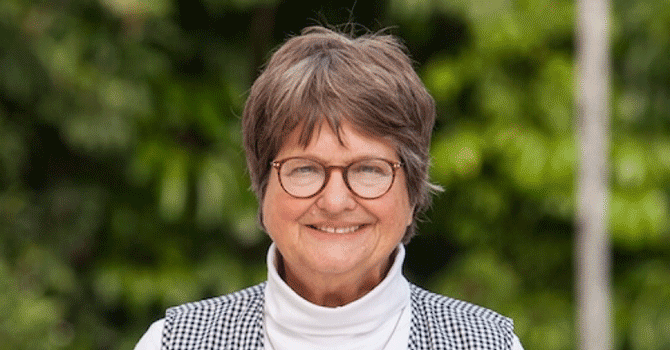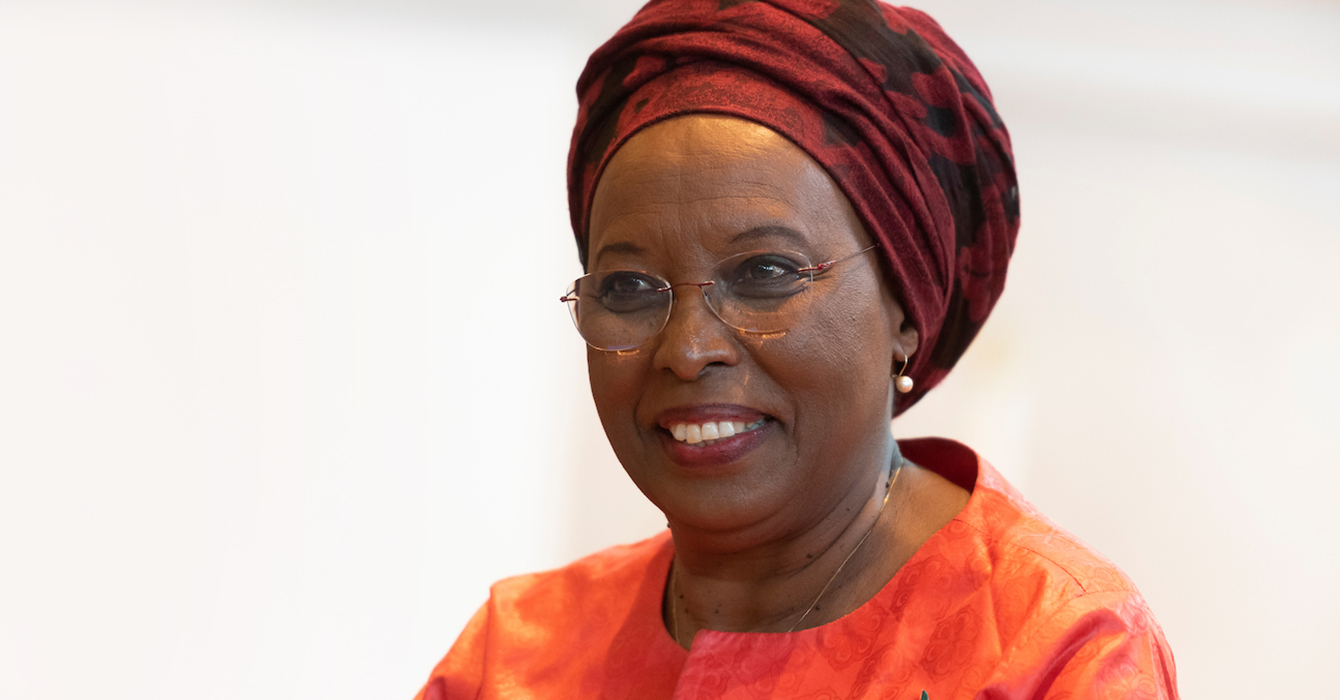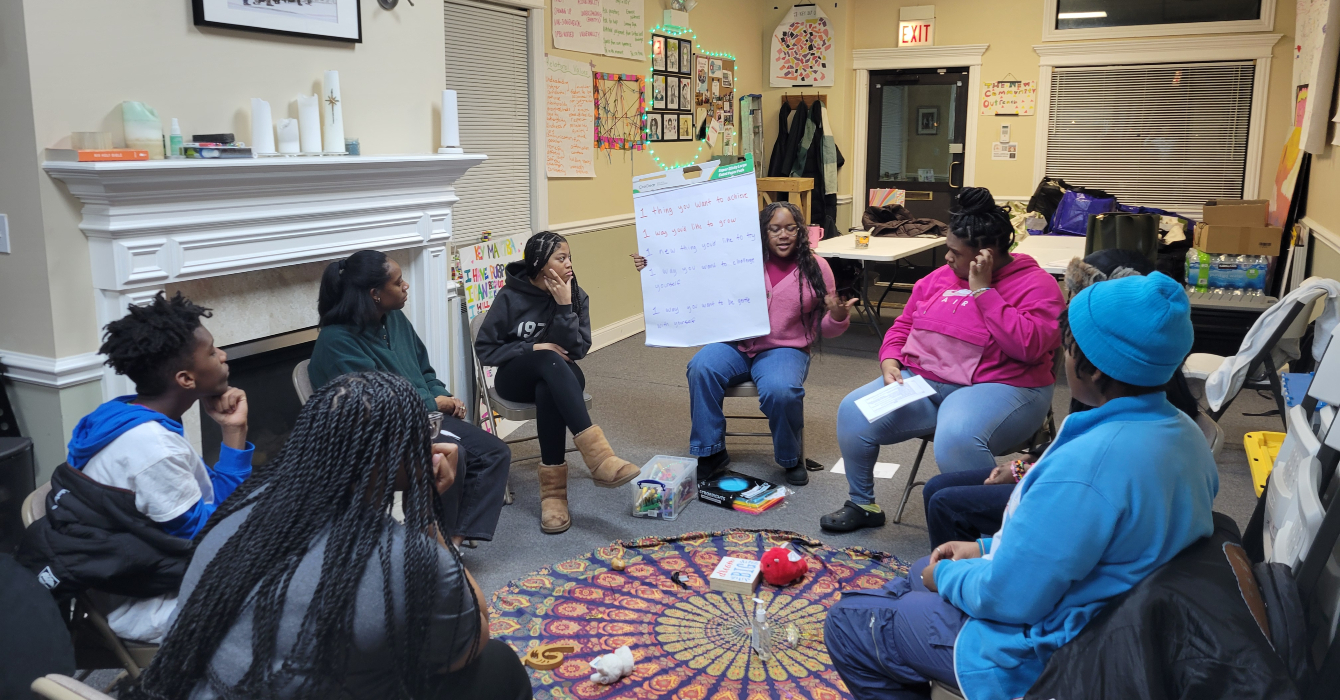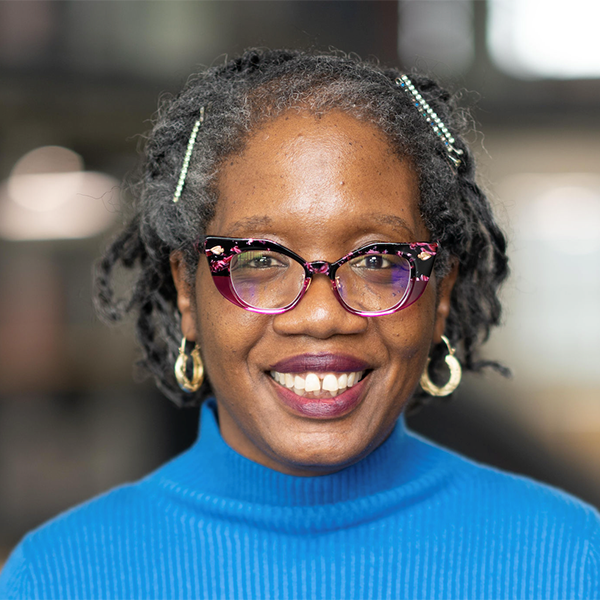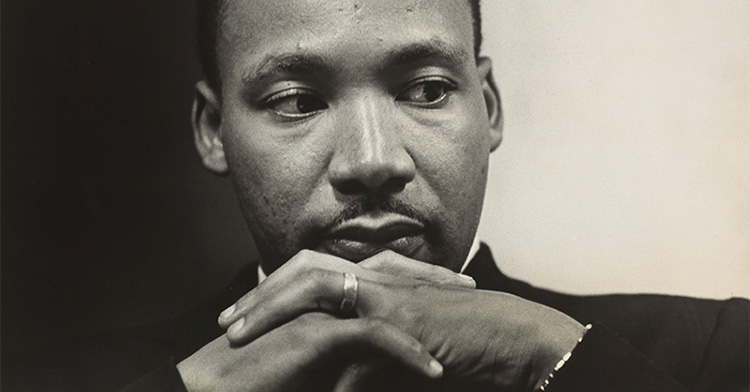Ever since the night in 1984 when Sister Helen Prejean watched Patrick Sonnier die in Louisiana’s electric chair, she has been on a mission to end the death penalty in America.
Her primary tools? Witness and storytelling.
“I remember very distinctly thinking, ‘The American people are never going to get close to this. This is a secret ritual, but I’ve been brought in as a witness, so I have to tell the story,’” she said.
For 28 years, she’s done that through every medium at her disposal, most notably through “Dead Man Walking,” her book -- later a film -- about Sonnier’s execution, his crime and her ministry to him while on death row.
A nun in the Congregation of St. Joseph, Prejean said she has learned much from her work in prison ministry, but especially this: Relationship is everything, and the best gift we can give each other is our presence.
Prejean visited Duke Divinity School recently and spoke with Faith & Leadership. The video clip is an excerpt from the following edited transcript. While at Duke, she also preached at Duke Chapel .
Q: Except for the 14 years between 1957 and 1971, most Americans have supported the death penalty since the first Gallup Poll on the subject in 1936. Why?
That’s an unreflected opinion. People aren’t wedded to it. They never think about the death penalty. It’s very much a knee-jerk thing. They go right with the rhetoric: “He deserves to die.” End of reflection.
It’s why the film of “Dead Man Walking” was so important. It helped change the way we reflect on the death penalty, because it brings people to both sides of the issue. You’re as much with the victims’ families, going into their suffering and asking, “Even if they witness the person being killed who killed their loved one, what can it do for them?”
And on the other side, the perpetrator of the crime, to see that he’s a human being. He did an unspeakable crime, but he’s worth more than that one act of his life.
The whole thing is to get people to think. When they get even a little bit of information, it’s not that hard. That support is a mile wide but an inch deep.
So that’s my task. That’s what I do. I go to wake people up, and I do it through storytelling.
Q: What you do is “witness,” literally and in the religious sense. Tell us about the importance of witness and storytelling in your work.
Patrick Sonnier was the first person I ever saw killed. He was executed April 5, 1984, in the middle of the night. I was there. All of it was revelation to me. I never dreamed they were going to kill him when I wrote the first letter.
I came out of the execution chamber and threw up, and I remember very distinctly thinking, “The American people are never going to get close to this. This is a secret ritual, but I’ve been brought in as a witness, so I have to tell the story.”
There’s a commitment, and commitment is an interesting thing. It’s not just willpower. It’s not an intellectual thing. It’s not pure emotion, because you can’t be carried by emotion. Emotion doesn’t last.
Something seizes us. There’s a clarity and an energy to do it, which has lasted ever since. I get on planes and go all over because I know that unless I bring people close to the reality, they’re not going to know what this is.
Q: And that’s where the storytelling comes in.
Yeah. See, here’s the thing about story. Story allows people to go with you. I wrote “Dead Man Walking” and my second book as eyewitness accounts. You take people with you, and it’s just flat-out good journalism. Show; don’t tell.
You bring them into the story. You let people witness it for themselves. When they’re reading, it’s a private place, almost like you’re on retreat. You’re not debating with anybody. You can just go there and picture it in your own imagination.
You bring them into the victim’s family, to what it actually means when people kill a human being. And they can emotionally, viscerally connect. You’ve got to tell the horror of what happened, what the crime was.
Then, bit by bit, you walk this fine line and gradually introduce readers into the horror of what it means for the state to kill a human being. If you collapse that tension on any page, the book fails.
I had to learn the best way to use my gifts. Sometimes I was in debates. Debates, it's like you’re shingling arguments. It’s mostly a head thing.
With storytelling, you bring them into victims’ families and show what happens to them in this process. That’s important, because one of the fallacies of the death penalty is that this is what it takes, that this is justice for a family who has had somebody killed.
Q: What’s the role of clergy and other church leaders in addressing the death penalty and prison issues, and how well are they fulfilling it?
When I began this work in the early 1980s, I couldn’t get the Catholic bishops to do anything, because the archbishop of New Orleans blocked any serious statement of the bishops of Louisiana.
So what I began to do was dialogue, relentless dialogue. And dialogue in the church is always with the people. With the leaders, too. We kept trying to get leaders to come on board, but it’s a controversial issue.
Anybody who’s a pastor, if you pick up the issue of the death penalty, you’re not talking about innocent life. You’re talking about guilty life. It means you’ve got to take your congregation through metanoia, through conversion, through change of heart, from wanting to see somebody die and crying out for their death to compassion, to seeing that they too are a son or a daughter of God.
It’s a tough journey, so a lot of them don’t want to pick it up.
For me, it was always wherever you could get in. The gospel of Jesus has always lived in the people, in local communities. The first person I worked with in New Orleans was a Methodist pastor, Tim Lawson, who had this little church. We had more meetings in that Methodist church.
I worked with everybody. Anybody who would move, I was there with them. Then an Episcopalian church picked it up. Then the Presbyterians picked it up, so it’s like water going under and around rock. Wherever they’d pick it up, I’d go be with them.
I went, “Wow, so this is what ecumenism is. This is how you really work together, and it’s around social justice.” Then you don’t get hung up on all these little dogmatic things of what you believe, what I believe.
Q: How have your relationships with death row inmates and others in prison influenced your formation as a religious leader? What have you learned from them?
Relationship is everything. It’s not for your formation to be a leader. It’s just that it’s everything. It’s what Jesus is about, that we are in relationship as brother and sister. The message of every spiritual tradition at heart is we’re all brothers and sisters. Nobody can be ripped out.
And compassion -- compassion is what drives us and brings us together. And here’s the thing, the mutuality of what happens: It’s not just what I’ve given to people on death row. It’s what they’ve given to me.
I’ve been with these six human beings in the last hours of their life, and I saw what courage was. I saw what faith in God is, turning your life over to God. I’ve seen remorse. I’ve seen sorrow.
Sometimes I reflect on that. What is it like to do something irreparable and you can’t get it back? That has to be a terrible suffering. What dimensions of God does it bring you into, where you have to turn that over?
You remember in the First Epistle of John, where John says, “Even if your conscience accuse you, God’s love is greater even than your conscience”? So what spiritual depths do people reach by that?
Q: Discussions about the death penalty are often in the abstract. Being in relationship must make it very concrete and real.
Yeah, that’s right. Jesus is Word made flesh. If the gospel doesn’t happen in the flesh, between people, it’s not happening, no matter how many treatises you write or whatever you do.
And I’m going to tell you the gift of all these years now, visiting in prison; here’s the big thing I learned. When you visit in prison, it’s just the two of you or whoever it is talking. All you have is your presence with each other. There’s no video to go rent, no “Let’s go get pizza.”
The best gift we ever give each other is our presence. And we all long for that -- people’s undivided attention to be present to us. Husbands and wives want it. Children want it from their parents. Students want it from their teachers. Presence, to be able to be present -- and it has so taught me that over all these years. Because you’ve got a cement floor, you’ve got bars, you’ve got the two of you. And you learn to flow with the conversation and be present, let the time be filled.
You’re not living in this anticipatory thing of, “Oh well, I’ve got one more hour. We’re going to be here two hours.” You’re just like a boat. You get on a current and you go with the conversation. It’s taught me a lot about presence and living in the present moment.
Q: How do you deal with the tension between being in a pastoral role to someone in prison and at the same time being an advocate for change in the criminal justice system?
You’ve got to be savvy. You know how Jesus talked about that snake and that dove? Well, you’ve got to be wise as a serpent, guileless as a dove. And here’s how I’ve done it.
Your relationship with the person is intact. It has integrity. You know that you are there to accompany them and to be their friend. That entails honest conversations, because sometimes people are edging away from responsibility.
I always abide by the prison rules. I never break them, because it would jeopardize everything. But when I step out of that prison, I’m a free agent, and I’m working to end the death penalty.
Chaplains that get paychecks from the prisons, it’s very tricky. They unwittingly can play a role in keeping a prisoner calm using religion so the prison can carry out its execution, and then they become complicit.
That’s what’s great about the sisterhood. Nuns, we’re free agents, and I have the sisterhood behind me. I don’t need to get a paycheck from anybody, so I’m free then to do the gospel, really free.
Q: Where should pastors focus their attention on this issue?
Well, it’s always, “Where would Jesus be to hear the cry of those who are silent?”
Once you begin to visit people in prison, the first thing you find out is they’ve got families. They may have kids who never come to see them. Prisons are places of exile that separate families. So connect families.
Sister Suzanne Jabro in California started a ministry over 20 years ago to bring kids to see their parents in prison. I have a friend whose church has a van that brings kids on Saturdays.
Just start. Once somebody is your brother or your sister, their needs become your needs and you identify with those.
I never see “spiritual advisor” as just in the strictly spiritual realm. Sometimes it’s their physical needs. If the guy’s dying of diabetes and he needs to get good medical attention, you can’t say, “Well, that’s a body. I’m doing a soul.”
It’s the whole person, just like Jesus. That’s what we’ve got to be about.
Q: What’s the most compelling argument in favor of the death penalty and the most compelling against?
I’ll give you the little cluster “for” that I’ve seen at trials:
“Ladies and gentlemen of the jury, this person did not respect the life of his victim, didn’t respect her human rights. Why should we respect his? That victim is dead and buried forever, and this family will never see their daughter graduate from college or see their grandchildren. Death deserves death. He killed; therefore, he should die. And anything less than death is going to dishonor this suffering family. A death for a death.”
They may throw in others, but “only a death will do” is the core of it.
The one that’s dropping off, because it’s ineffective, is “it will deter others.” Everybody knows by now there’s no deterrence value.
The arguments “against” are a combination. The heart of this act is that because someone has killed, we will now legalize it so we can kill them. It amounts to legalizing vengeance.
The death penalty also involves good people in the killing for us. A death row guard told me he did all right as long as he was just serving people their meals and keeping order. But then he got moved to the strap-down team, and he’s involved in taking that alive person out of his cell and strapping him down and killing him.
They’re trained. They’re told, “You’re not murdering anybody. This is what the people want. It’s all legal.” He says, “I come home afterwards and I can’t sleep. I can’t eat. I’m going to have to quit this job.”
Not least of the arguments against it is that we are pouring huge resources of tax money into killing people. It’s so disproportionate, and it is not a neutral act.
The use of our resources for life or death -- these are choices. If you’re putting millions into killing a very few people for their crimes, you’re not putting it into at-risk kids or Head Start or education. You’re taking money from life and you’re putting it into death.
Q: You’ve said that the death penalty is about more than the death penalty. How so?
The death penalty is not a peripheral moral issue that just deals with, “How are we going to deal with these few terrible criminals?” All the wounds of our American culture are in this act.
One is racism. We’ve seen the pattern. It’s when white people are killed that the death penalty’s sought. Eight out of 10 people on death row killed a white person. Over half of the homicide victims in this country are people of color. The death penalty is seldom sought for a person of color.
Class is in it. Over and over, it’s only poor people selected.
And at the heart of it is thinking that violence is redemptive, that this violent solution is what you have to do to keep society safe.
Q: Communications has played a huge role in your ministry. Where would it have been without the book or the movie?
A good editor helped me write a solid book to take people on the journey, and then the movie came out. The movie was sheer grace. It really put the book out there. I told Tim Robbins, “The film plows the ground and the book tills the soil.”
Without the movie, I just think the book would have bumped along, and it would have been word of mouth.
Q: What about new media? You have a website, a Twitter feed and a Facebook page. How important are these to your ministry?
What if Matthew, Mark, Luke and John had had Twitter? Just think. You’ve got to use whatever methods you’ve got in the media and in technology to get the message out.
Proclamation of the gospel’s always been about, “Let me share with you what I know” and getting it out there. So why not use all these?
I have somebody who helps me do this. I hardly know the difference between a Twitter and a tweet, but I send her stuff and she puts it out there.
Q: You’re 72, and in the past month or so, you’ve been to Chicago; Columbus, Ohio; San Diego; and now Durham. How do you keep doing it?
Here’s the thing I discovered about “gospel energy,” I’ll call it. When we’re on the path and we’re doing what we’re supposed to be doing, the energy comes back to us. There’s a mutuality that happens.
I never use a canned talk. Ever. I step out. I’ve got, invisibly, two big bags of stories, and we build it together. I know in general where we want to go, where I want to take them, and then the stories can change. It’s never the same.
There’s a reciprocity. I can hear it from the silence and the stillness. I can see from people’s eyes. It gives you energy. It’s not like I’m pouring all my energy out and then I’m empty and they’re full.
Hopefully, we both leave full. Now, I’ll sleep well at night. Don’t get me wrong. But that energy kicking back to me is a sure sign of God’s presence and grace and the Holy Spirit.

